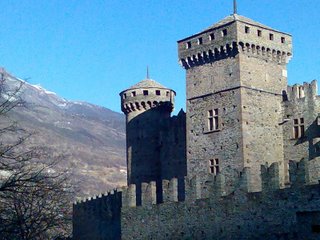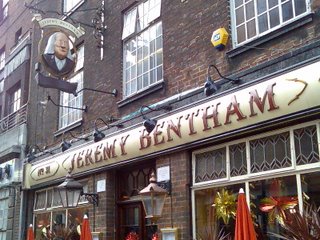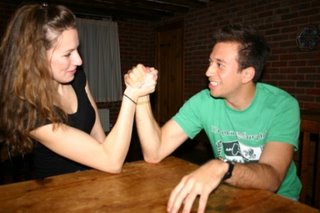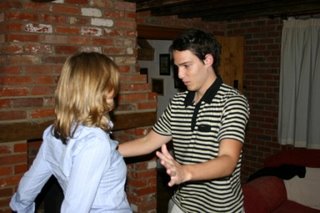Well, I’ve just achieved a little dream of mine, which was to head to Paris to check out two particular museums that I had longed to visit. And so, accompanied by the Singapore Doctor, we took a daytrip this past Saturday to the City of Lights, where it rained the entire day. The weather was sullen and miserable. But never mind. I had come in search of Monet’s famed waterlilies. And I certainly didn’t leave disappointed.
Claude Monet is probably one of the most accessible artists from one of the most accessible periods in Western painting – Impressionism – the movement which emerged from France in the second half of the 19th century. Those who dislike Monet’s artistry probably do so because much of his work have become so popularized that they’ve attained the status of commercial kitsch. Not something for snooty sophisticates, perhaps.
But to malign Monet would be to disregard the revolution in art which he helped to foment, and to discount the sublime nature of his own artistic development. For there is more than just one Monet. There is the younger Monet of the 1870s and 1880s, who created attractive landscapes around places such as Argenteuil, his home for some years, along the coast, and also in Paris. But there is also the later Monet of the 20th century, more serious and intense, during the period of modernism. The Monet of contemporary art. And it was works by this Monet that had brought me this day to Paris.
Monet’s works can be found across
many museums in around the world. He was a truly prolific artist. After years shuffling around parts of France, he finally settled in an estate in
Giverny. The year was 1883. Monet was then aged forty-three, and he would spend the next forty-three years of his life there.
And it was in these later years that Monet began focusing, almost to the point of obsession, on painting waterlilies, or
nymphéas – as they are known in French. The waterlilies were to be found right in his garden, in a pond which he enlarged, and over which he subsequently built a Japanese-styled footbridge, which was to feature in so many of his works. And it was in Paris where prime examples of the late Monet waterlilies are to be found.
The
Musée Marmottan Monet is located in a quiet residential district to the west of the city, off the central tourist core. But what treasures it contains – reputedly the largest single collection of works by the great master, bequeathed in the 1960s by his son, Michel. Converted from a former residence, it contains many rooms featuring French decorative arts from the 19th century.
But I had little interest in them. Instead, I headed straight to a large lower level room. And there they all were. One could see representative works from all period of Monet’s output, including frames from famous series such as the
Houses of Parliament and
Rouen Cathedral. Plus, hanging right in front was the one that began it all –
Impression, Soleil levant (Impression, Sunrise) from 1872, which had led an art critic to term it, derisively, as Impressionism.
But what drew me to the Marmottan, principally, were the many paintings of waterlilies which Monet executed – dazzling shades of colour, blue and purple, images of water merging with nature, reflections of the light, dizzying, alluring, and dream-like. There were a few images of his famous Japanese footbridge, but one could hardly discern it from the mass of colours on the canvas. Here, Monet was moving almost into abstraction, painting not simply a representation of what lay before him, but of what he perceived in his mind.
The visit to the Marmottan prepared me well for my next stop – the
Musée de l’Orangerie. It’s a nondescript looking rectangular building – a former fruit conservatory – located right in the heart of town, next to the Seine in the
Jardin des Tuileries. Yet how many could tell that contained within were examples of what I’d term the pinnacles of Monet’s artistic accomplishments –
Les Grandes Décorations – or his monumental waterlily panels.
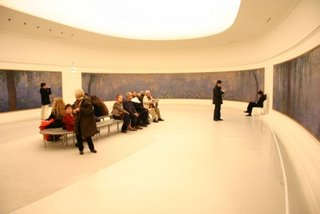


Stretched over two large oval rooms within the Orangerie are eight enormous canvasses of the
nymphéas under different conditions. And when you stand in front of them, you cannot help but be captivated, sucked in by their transcendental power. For they overwhelm you. You cannot take in every detail in a single glance. It is all-embracing. It seizes your sense of wonder and awe. You have to step back, erasing all thoughts of a horizon, believing yourself to be looking at the water, with its shifting moods, subtle colours, and reflections of willows and tree trunks. In a word – breathtaking.
Monet spent his last years working fervently on these large panels, inspired by the waterlilies and garden pond at his Giverny home. Just after the end of the First World War, he bequeathed them to the French government, which undertook to display them at the Orangerie. There they’ve been for the past decades, and a massive restoration effort to the building which began in 2000 was finally completed earlier this year, allowing a new generation of visitors to marvel at these magnificent creations.
The stars of the Orangerie were, naturally, the Monet waterlilies. But the museum also offered a rather good range of works from the Impressionist period and after, including works from Renoir, Cezanne, Rosseau, Modigliani, Picasso, Matisse and Soutine. There was a large collection as well by Andre Derain, whose works I wasn’t too familiar with. I learnt later on that along with Matisse, he’s considered a leader of the Fauvist movement. They tended to use bright, brilliant colours, but I think those works by Derain on show at the Orangerie displayed a decidedly more Mannerist quality to them…
Finally, I can’t end this account, surely, without mentioning the inimitable
Restaurant Chartier, where we grabbed a good lunch. It’s centrally located, on the Rue du Faubourg Montmartre, within walking distance of the Garnier Opera House. But how do I even begin to describe the marvellous setting and atmosphere of this historic Paris establishment? Here, at least, is a quick
review from the Frommer’s guide.
We stepped of the sidewalk and into a small, open courtyard, where a steady line of locals had already formed, despite the rain. After minutes of waiting, we were ushered into this large and impressive room, packed with people – a scene that has probably remained unchanged for decades – and shown briskly to our tables. The menu for the day was dramatically brandished, and we both settled on the
Pave de rumsteack au poivre frites, which turned out to be too bloody for my liking, accompanied by separate servings of sliced tomatoes, mushrooms, and a half bottle of a brilliant Bordeaux.
We left, satiated, amused as well by the exquisite Gallic nature of the restaurant, but with me thinking that I needed a good crepe to complete my gastronomic experience. I found it later that afternoon, as expected, from a crepe and waffle wagon parked outside the Jardin des Tuileries, facing the Place de la Concorde.
So, I got my Monet, and I got my crepe. The rain was awful. But my day in Paris turned out to be pretty nice indeed.
Travel Notes: The Channel Tunnel and the Eurostar have made travels from London to Paris ridiculously easy, with a day trip eminently within reason. We departed on a 0634 train from Waterloo station, and arrived in the Paris Gare du Nord at 1023, with an entire day ahead of us. A one hour time difference separates the two cites. Day passes for the Paris Metro are available conveniently at Waterloo.


